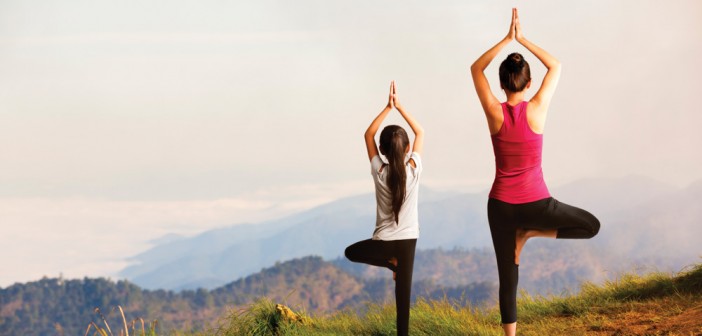“Perfection” being the American model enables us to avoid the reality that we all have special needs. The brain does not function perfectly for anyone throughout a lifetime. We all have imbalances that start in the brain; some occur prior to birth, and others after. With most neurologically typical births, the child’s brain development continues and they can quite gracefully assimilate environmental inputs received by their senses. A neurologically compromised individual struggles to function in the chaotic environment of light, sound, taste, touch, smell, words and feelings; and they need to learn coping mechanisms in a highly-structured manner. The truth is: we are all far from perfect.
Adaptive Yoga has been promoted through the Matthew Sanford Yoga Moves Foundation and focuses on those with neuromuscular challenges. He explains, “Yoga is an art and science that connects the body, mind, and spirit through the practice of physical postures (asanas), partnered with breath (pranayama) and meditation practices. Adaptive yoga modifies these postures.” The “mindfulness” movement which is sweeping the country helps yoga students to tune-in to the present moment by gaining awareness of their internal state of mind, and how to more healthfully balance their internal and external environments. As a result, individual sense of self-worth, competency and contribution are enhanced.
For the purposes here, Adaptive Yoga modifies yoga poses using a highly structured environment that controls sensual intensities for those with neurological disorders due to stroke, Autism Spectrum Disorder, or Alzheimer’s disease. Those living with Autism Spectrum Disorder generally display differences in communication/socialization, demonstrate behavioral inhibitions (or lack of), and can show usual motor movement and attachment to objects. Sensory integration is a vital component in working with individuals with neurological brain imbalances. Autistic Impaired classrooms are equipped with sensory integration rooms to encourage balancing the vestibular (inner ear and brain) and proprioceptive (“body sense”) systems. The special rooms may feature a “squeeze machine” developed by Professor Temple Grandin to provide deep pressure to the joints, brushing techniques to inhibit tactile over-sensitivity, trampoline, therapy balls, T-stools, a platform swing … basically, implements that help structure functional movement in a body that often does not know how to relax in the space around it.
Adaptive Yoga practice for these individuals requires verbal prompting with as few words as possible, and avoidance of continual repetition of instruction. The neurologically compromised brain needs processing time and not over-stimulation from an instructor who sounds like a broken record. Voice tone, pitch and frequency make a difference in student receptivity and performance of new skills. Instructors who have patience, humor, consistency, versatility and humility will provide the best service. Visual cues of each pose are a concrete tool in the learning process.
Fostering a sense of belonging and competency is crucial to measuring success of any kind. Initially, the physical labor in body positioning may be exhausting; however, as they gain understanding and confidence, the reward in seeing them initiate and reciprocally communicate through deliberate actions, and often, increased receptive and/or expressive language is joyfully fulfilling. Bringing children away from the chronic isolation associated with Autism benefits the child, the family, and the community; we all become more able to healthfully interact.
“Everyone can practice yoga.” B.K.S. Iyengar














